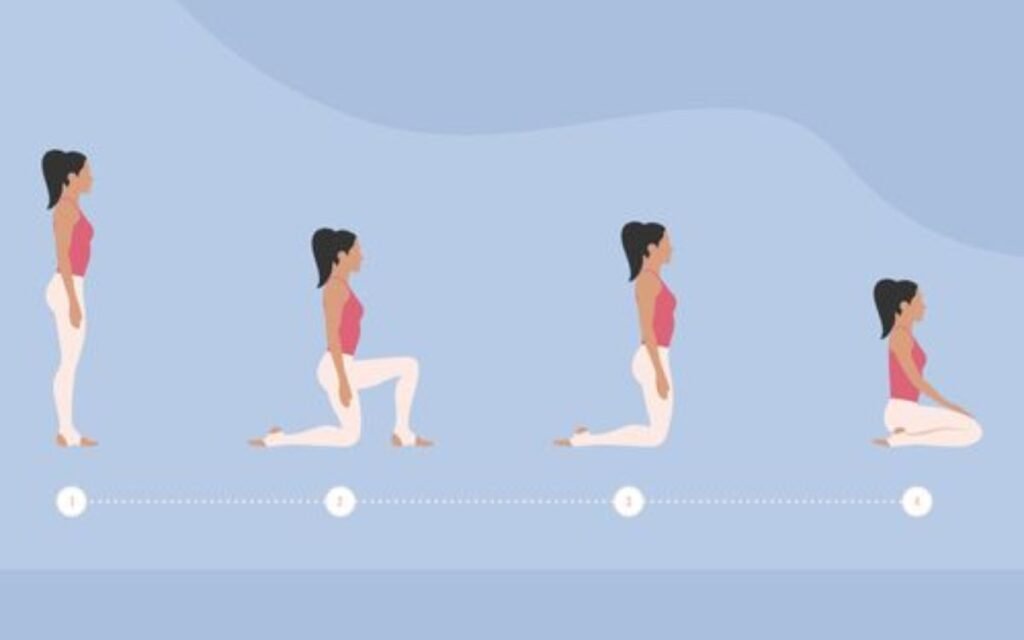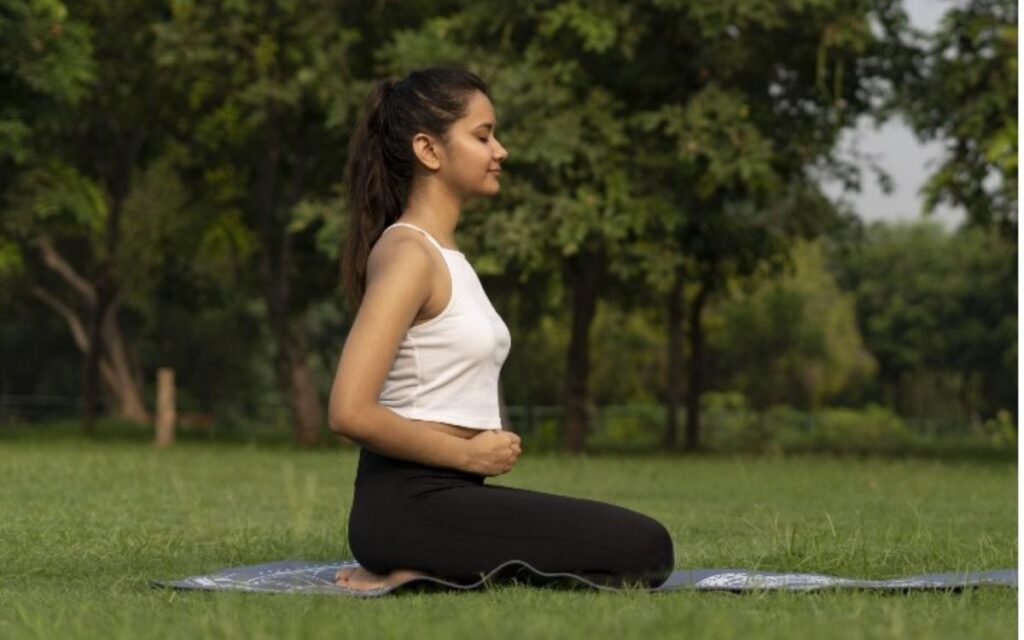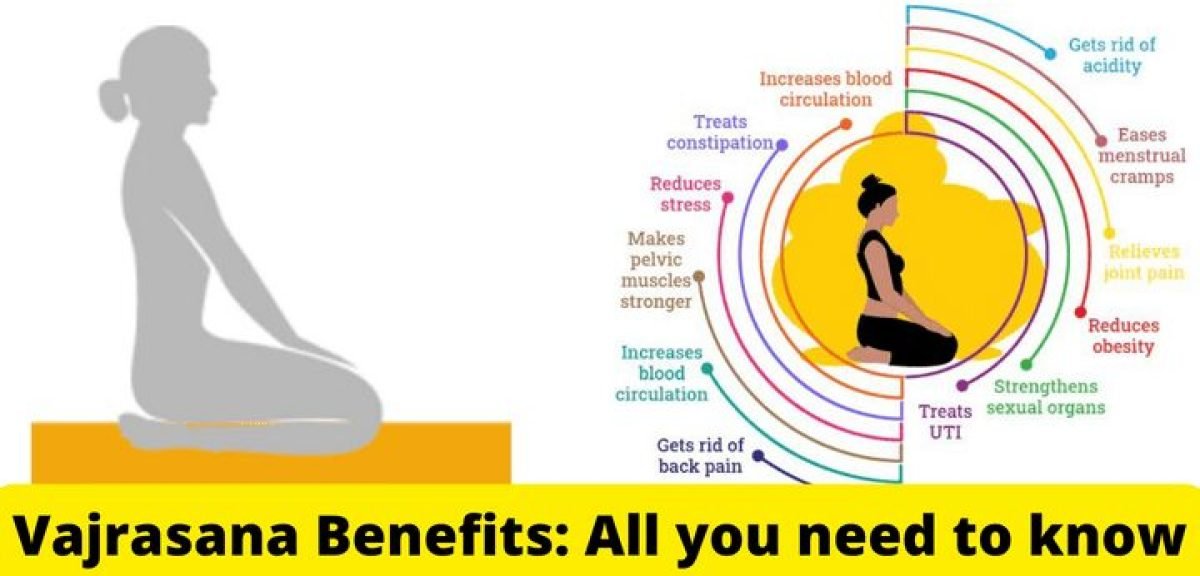Yoga is an ancient practice that has been passed down to us by our ancestors over decades. The asanas in yoga have proven that they can treat many physical and mental ailments if we follow them correctly. Like other asanas, there is one yoga pose that provides many benefits i.e., Vajrasana.
Vajrasana is derived from the Sanskrit words “Vajra” and “asana”.Vajra means both diamond and thunderbolt and “asana” means pose. It is a simple pose that can be performed by anyone without considering the age factor.
Origin of Vajrasana
As mentioned above Vajra means thunderbolt and in history, Thunderbolt is known as a weapon used by Lord Indra in Hindu mythology. It is also known as a symbol of strength. The other word asana means pose and is a common term used for postures. There is one more sign of derivation related to Vajra Nadi.
Basically, Vajra Nadi is known as a network of routes through which prana moves in the body. It also aids the activation of kundalini energy. That’s why it is the best pose for digestion. Like this, Vajrasana also provides other benefits.
Other names of Vajrasana
- Diamond pose
- Kneeling pose
- Pelvic pose
- Adamantine pose
- Thunderbolt pose
Step-by-step guide: How to perform Vajrasana

Vajrasana is one of the simplest and easy poses that everyone can perform. But it is important to perform it correctly.
- Start kneeling by sitting on the floor or yoga mat.
- Fold your knees backward and point your feet to align them with your legs. Your feet should be upward-facing and also should touch your toes.
- Keep breathing and sit bacon the legs. Your thighs should place on your calves and your buttocks should place on your ankles.
- Maintain the position by keeping your neck and head straight.
- Keep your head straight and your eyes always should be looking in a forward direction.
- You can adjust your thighs to be in a comfortable position.
- Always keep your hands on your respective knees aligning with elbows in a straight line.
- Breathe normally.
- Then start inhaling deeply on four counts and exhale it on eight.
- To come out of this asana, slowly raise the thighs to get back to the kneeling position and then stand up slowly.
Health Benefits of Vajrasana
The benefits of Vajrasana are listed below:
Increases concentration power
Vajrasana requires deep breathing. So, when you are performing this asana, you have to be fully attentive and have to concentrate on your breathing. It is optional to close your eyes. It totally depends on you how you want to focus. The practice of this asana increases the concentrating power of the brain and because of this, you will be able to concentrate without getting distracted.
Vajrasana benefits the Digestion System
Vajrasana benefits the digestive system by restricting the flow of blood to the legs and thighs and increasing the flow of blood towards the stomach. So that people can overcome constipation and acidity problems. It helps the body to absorb more nutrients from the blood effectively.
Calm our mind
This asana is a part of meditation. The breathing exercise during Vajrasana pose benefits people in improving their consciousness of the mind and also relaxes our minds. Also helps in overcoming stress, depression, and anxiety issues.
Improves sexual health
The increasing age affects sexual health. So, Vajrasana helps in strengthening sexual health and also prevents them from ailments.
Reduce menstrual cramps
As we all know, periods are normal for women. Every woman goes through the pain after every 28 days. Sometimes, cramps can be irresistible. So, as a natural cure, Vajrasana helps in relaxing the waist and hip region muscles to get relief from the pain.
Vajrasana benefits in overcoming Obesity
Vajrasana provides great benefits to people who want to overcome obesity. If you practiced it regularly, you will eventually feel the result in your body.

Improves body posture
One of the mandatory steps in Vajrasana is keeping the neck and back straight. You have to hold this position for a long time. Because it will help you in improving the posture of the body and relieve all your pains.
Vajrasana benefits in controlling blood sugar levels
It helps in controlling high blood sugar levels. It improves insulin production and glucose levels in the body by stimulating abdominal organs like Pancreas and liver. So that it helps benefit a person suffering from diabetes.
Prevention of Urinary problems
It keeps the urinary system fit and healthy as these types of problems are common in all ages. So the practice of Vajrasana will provide benefits to the system and make it strong and free from any ailments.
Also read: Peeschute
Vajrasana benefits in relieving Rheumatic pain
With the continuous practice of this asana, the flexibility of your body automatically increases. Rheumatic pains happen due to stiffness in the areas like hips, knees, and ankles. It helps in relieving all these pains.
Other Important Benefits of Vajrasana
- Practice this pose after eating as it will help you in digestion.
- This asana will increase the blood flow in the upper parts like the stomach, lungs, and brain.
- It is base pose for many other asanas like Gomukhasana, Ushtrasana and Shishuasana.
- You can also do pranayams in this position.
Some Tips to keep in mind
- To avoid any discomfort, perform Vajrasana correctly.
- You can use a soft blanket if you experience ankle pain.
- You can also use a blanket or knee padding in case you feel pain in your knees.
- Place a yoga block between your feet if you feel any discomfort while practicing yoga.
Precautions
- If you have health problems like a hernia, you should perform this asana under the guidance of an expert.
- Arthritis patients should not perform this asana.
- Avoid this asana if you have a stiffness problem in your foot, ankle, or knees.
- People with slipped discs should avoid this asana.
- If you are suffering from knee pain or going through knee surgery, don’t perform it.
- Pregnant women can practice this by keeping the gap between the knees so it will not give pressure on the abdomen.
- Don’t perform this in hurry, as it needs time to focus on breathing.
Why is it difficult to hold Vajrasana
Sometimes, It is very difficult for people to hold the Vajrasana for a long time. They feel that their legs are going into the sleeping position, or they got numb and so they end up not doing it properly.
This is the easiest pose of yoga that can be done by anyone. If your body is not capable of doing it, you have to make figure out where you are lacking. There are also many reasons for that which has mentioned below.
- Injury
Sometimes we have suffered from past injuries and there is a possibility that it can be affecting us in the future. Because of this, you can face the problem of sitting on the floor.
- Not habitual of sitting on the floor
There are times when we used to sit and eat on the floor. Due to the advancements, we have forgotten about the culture of sitting cross-legged while doing work. Now we want the table, chair or other things to do our work. This lifestyle change has spoiled the habit of sitting on the floor.
- Poor blood circulation
As you know the stiffness of the muscles is the main reason for poor blood circulation. While doing the pose if you feel that your legs are getting numb, it means that you are living a non-healthy lifestyle.
- Obesity
If you are overweight, sitting on the floor can be difficult for you, and kneeling down is more difficult in this case but you have to try it out as it will help you in reducing that weight.
- Hamstrings
Stiffness in your calf muscles and hamstrings can be one of the reasons you are not able to hold the position. This will be a challenge for you to stay in that position in any way.
Tips to hold Vajrasana longer
- Do stretching in the morning.
- For stronger legs, do walking, jogging, climbing stairs, and cycling.
- Don’t start all the things in one go, start slowly and increase the time, and exercise accordingly.
- Use a blanket or pillow under the knees to support them.
When to consult with the Doctor
There are some conditions in which you can consult your doctor whether you can practice Vajrasaana or not.
- Slipped disc problem
- Difficulty in the movement of limbs
- Acute stiffness in foot, ankle, or knees.
Summary
Vajrasana is a simple pose but you can see that it has many benefits. If you want to perform the asana correctly follow the above-mentioned steps. It is an effective asana to strengthen your body and also to calm your mind. There is a possibility that you will not be able to focus at some point. Don’t worry with time you will be able to increase your capacity.




